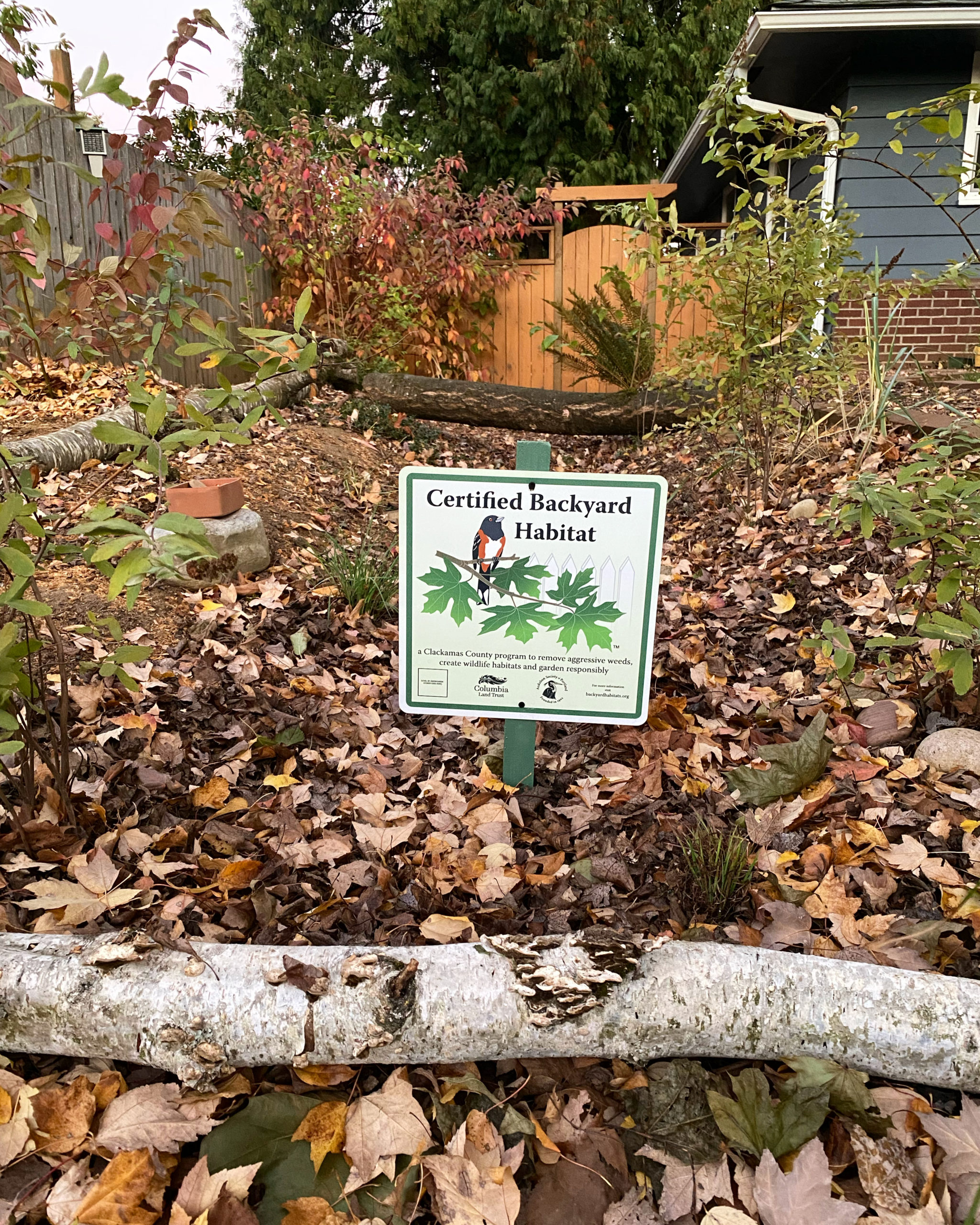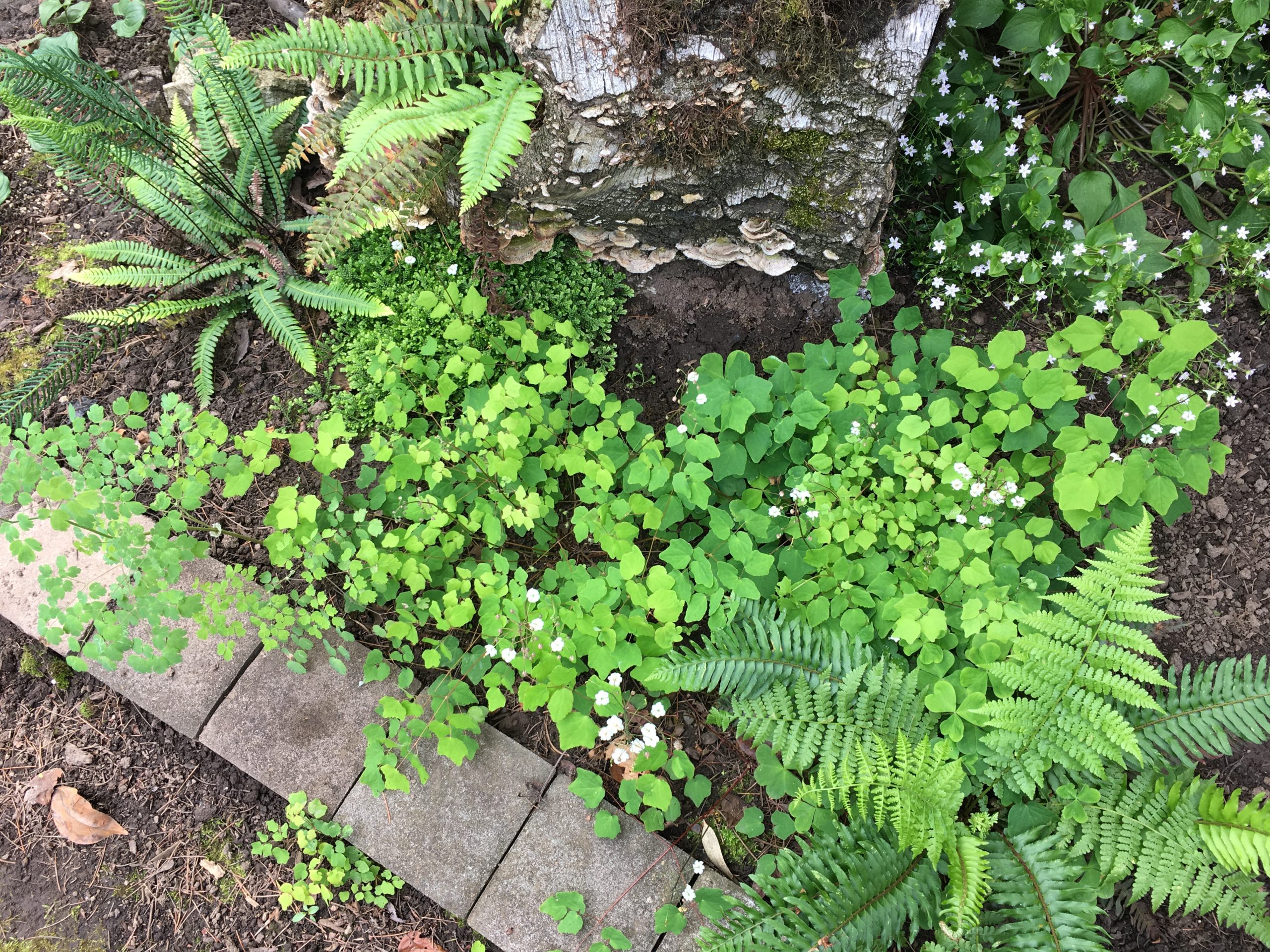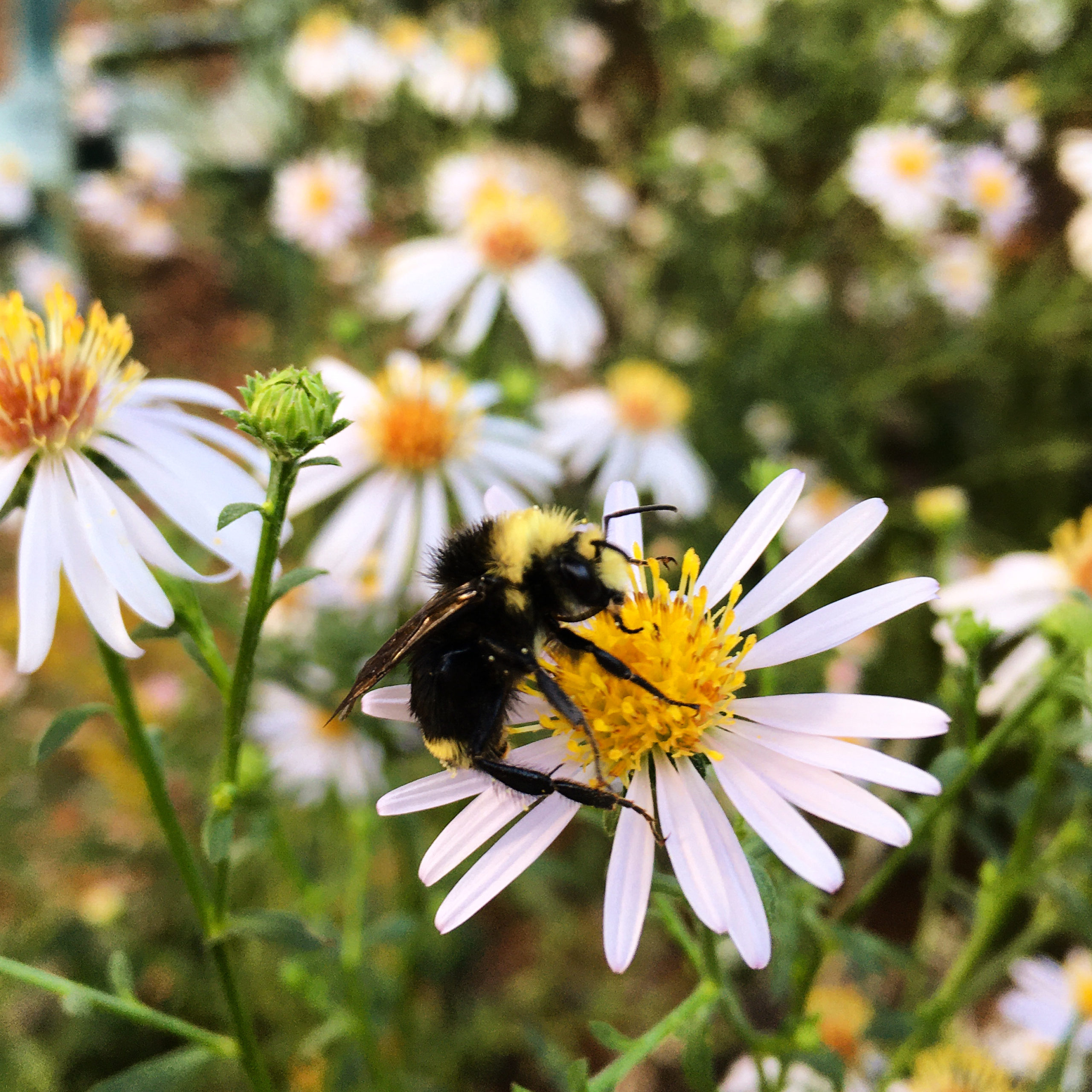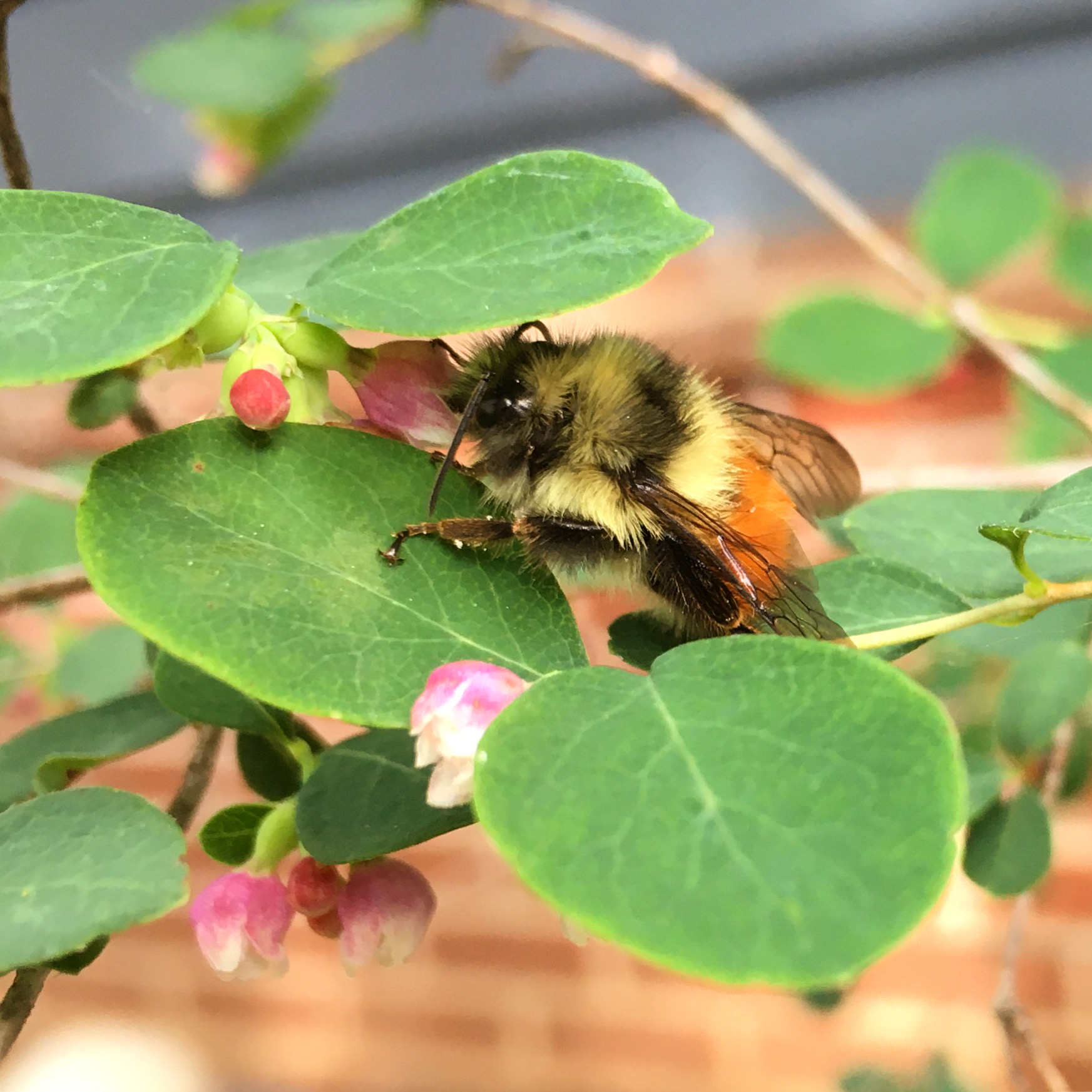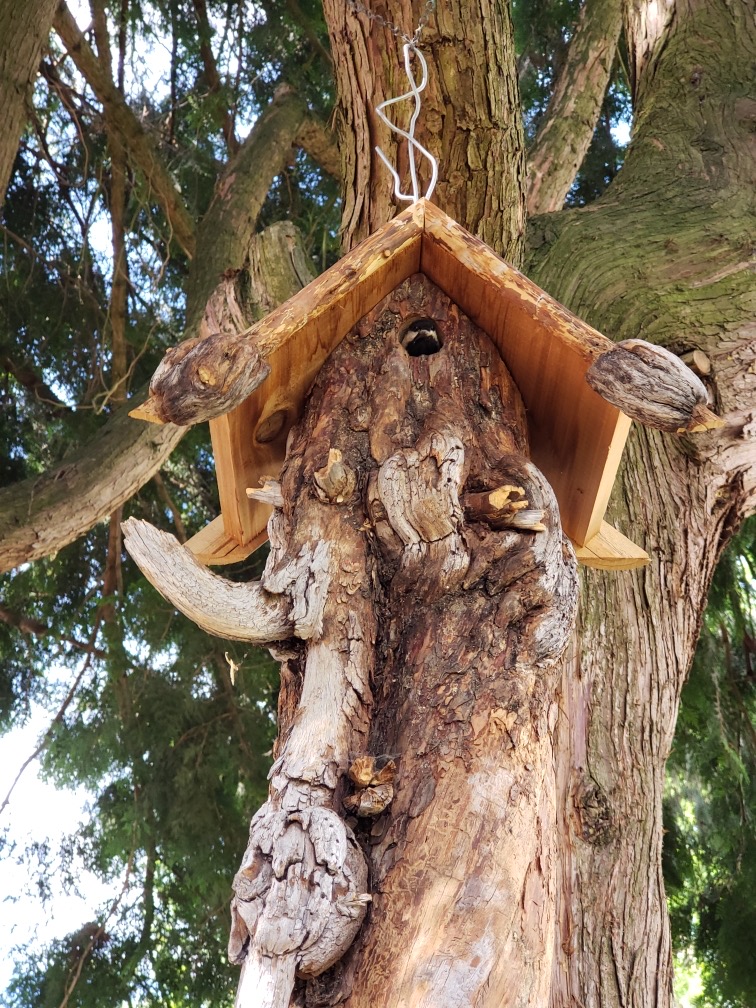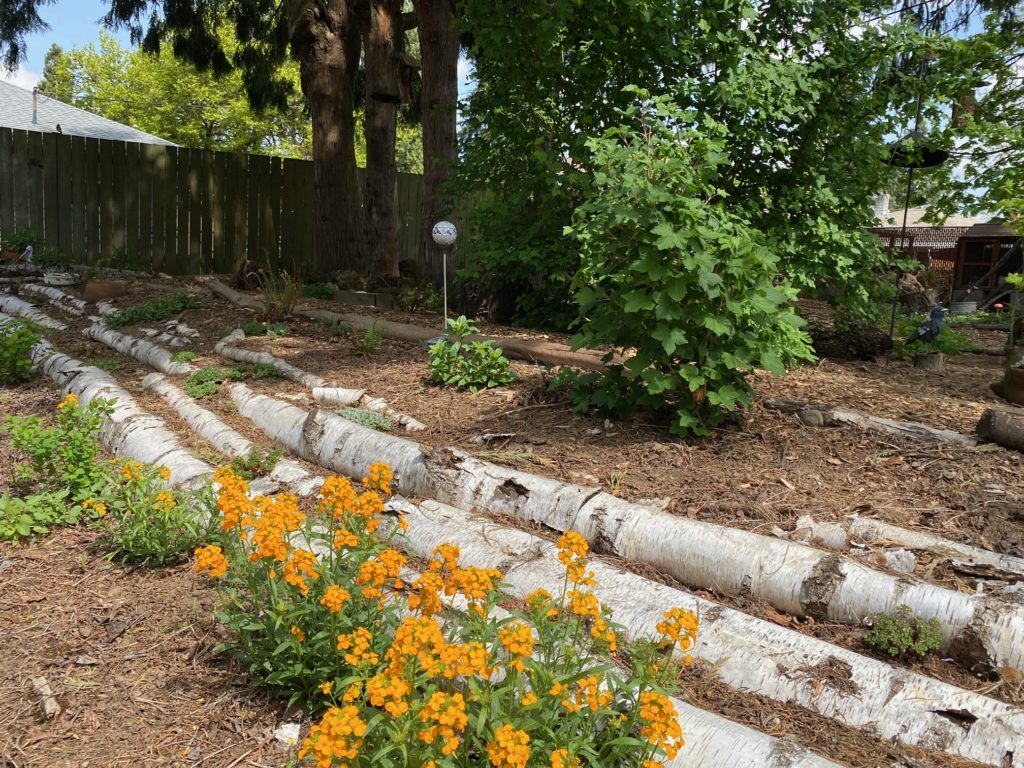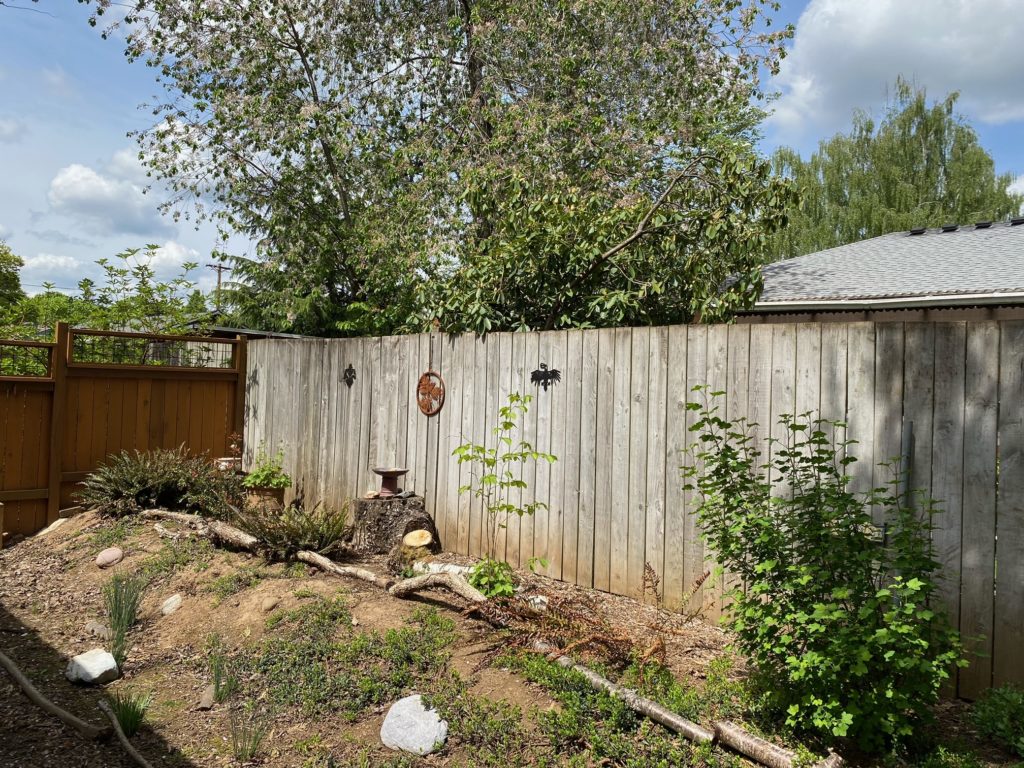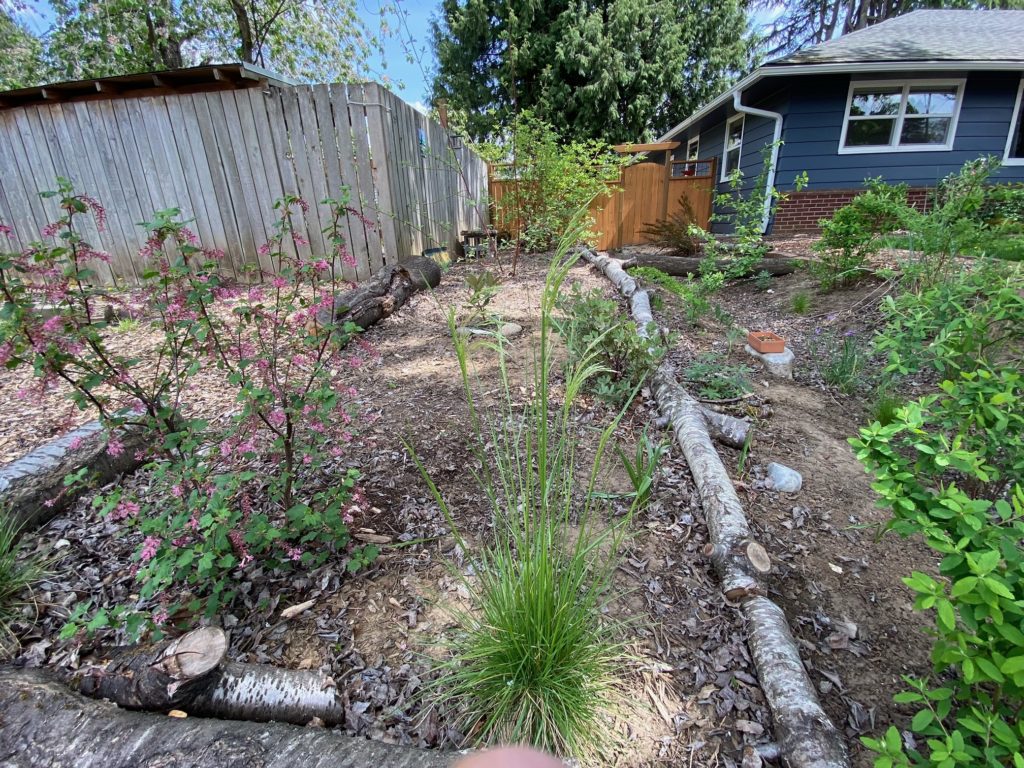Site Information: Karli’s habitat in Milwaukie has site conditions that include full sun, part sun, shade, dry, moist, wet, and the presence of a slope.
What inspired you to enroll in the Backyard Habitat Certification Program?
I grew up loving and observing wildlife, as I was raised in rural Oregon, so in a way, it was only a matter of time before I began pursuing native gardening. When I was young, native habitat was all around me, but now, much of that habitat has been degraded severely. It was many years ago that I was walking by a house in the St. John’s neighborhood and noticed a “Backyard Habitat Certified” sign. I was intrigued, and filed it away for one day when I had my own yard. When that day arrived, I googled “backyard habitat portland” and signed up right away. That first site visit catapulted me into the world of native gardening, and it’s how I spend most of my time these days.
How would you describe your habitat?
Our property had several mature trees (four western red cedars, a deodar cedar, a spruce, and a maple). Starting with the tree canopy, we began to plan out our understory layers. Walking around on the property, natural pathways became evident, so we marked those off using old branches. The first year, we put in our small trees and large shrubs, and the last couple of years, we have worked to plant smaller shrubs and ground layer plants. We have about 140 native species now on our property, including two rain gardens. We have 35-45 nurse logs at this point, a bird house, several bird baths, bee baths, several pollinator meadow habitats in process, and have removed all invasive plant species, though this is an ongoing process as they sometimes re-germinate. We have never used pesticides on our property, and removing many of the invasive plant species that had been growing on our property for decades was a lot of work–but, we did it! Our cats Winter and Pepper live indoors!
What are your top three favorite native plants and why do you love them?
1) Douglas aster (Symphyotrichum subspicatum) – I love this PNW native for its value to wildlife and its long-lasting blooms. I love the foliage, too. Doug Tallamy, professor of entomology, and author of my favorite book, “Bringing Nature Home”, describes asters as a powerhouse species.
2) Oregon white oak (Quercus garryana) – I grew up in rural Yamhill County on fourteen acres. At the time, it was fourteen acres of oak savanna habitat, and I spent my childhood climbing and loving those trees. These native trees are the powerhouse of the native plant world here in the Pacific Northwest that support the broadest range of wildlife. In Doug Tallamy’s book “Nature’s Best Hope”, he writes, “White oaks and their relatives are the very best trees you can plant in your yard for wildlife in 84 percent of U.S. counties. . . . Our early work showed that oaks in the Mid-Atlantic region supported hundreds of caterpillar species–557 to be exact–and at least 934 species nationwide, making oaks by far the best plants to include at home if you want to support food webs” (143-144).
3) Pacific ninebark (Physocarpus capitatus) – I love this one because it is the first native species I ever bought, and is beautiful year round. It supports a wide array of pollinators, and I am able to observe several species when its in bloom at any given time. It is host for our Spring Azure butterfly, and birds appreciate the seeds and cover it provides.
What changes have you observed as a result of creating habitat?
We had our first family of chickadees successfully raise a brood last spring! We have observed countless bird species over the years, and each year we see more and more as our native habitat garden matures. I observed the most species ever this past winter when I took on the leaves of several of our neighbors and bin by bin laid it beneath our conifers, which don’t produce leaves, as well as over every garden bed. Leave the leaves it one of the number one ways you can support wildlife by restoring your soil and providing habitat for invertebrates, the cocoons and chrysalises of butterflies, moths, etc., and even overwintering bumblebees. There is a world of life in leaf litter, and it supports our native birds that do not migrate over the winter, as well as greatly improves your soil.
One of my beliefs is that your front yard is an opportunity to spread knowledge. As we have slowly sheet-mulched our front yard (it is now all gone!), I have been spending more and more time gardening in front, whereas in years past I was mostly in our back yard. We have educational signs, and pedestrians often stop to ask questions or comment on the garden. The other day, my husband overheard two people walking by. One commented, “I wonder why they got rid of their lawn?” The other person told them that lawn does not support wildlife, while the native plants we were planting do.” Several neighbors have looked into pursuing backyard habitat certification from passing by our house, which is also what led me to discover native gardening myself when I passed by a habitat garden many years ago.
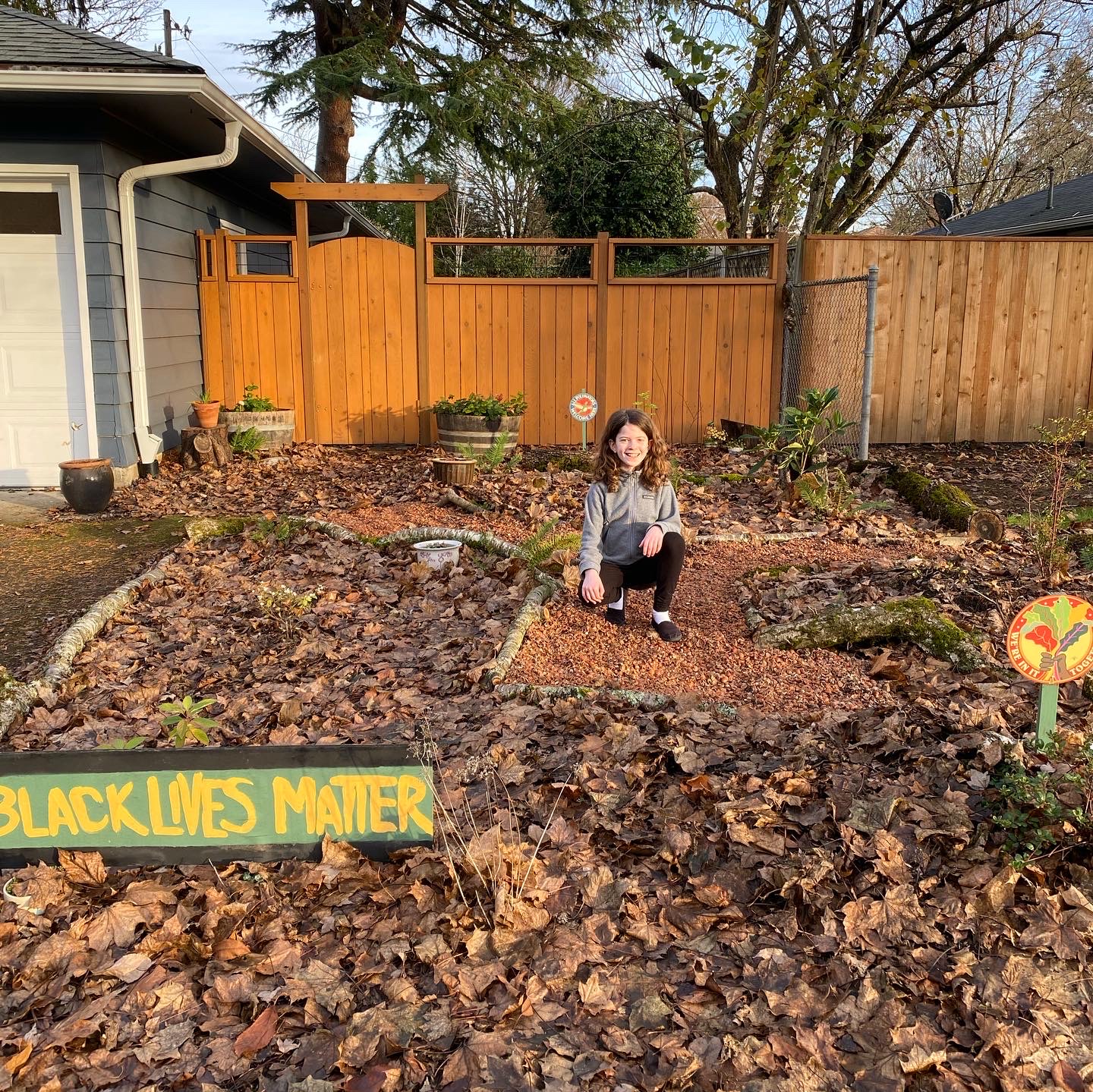
What were the two most significant challenges you encountered while creating habitat, and how did you address them?
The most challenging part for us was removing about a dozen invasive plant species growing on our property. Probably the most challenging was English ivy, St. Johns wort, Himalayan blackberry, sweet cherry, English laurel, and many more. The St. Johns wort was unbelievably difficult to dig up and eradicate. We still from time to time have bits that try to come back. We also had large amounts of bamboo that had to be removed after nearly 40 years of neglect. We removed all of these the old fashioned way, with shovels and manual labor. We also had significant water issues on our property where there was a positive grade towards the house, flooding our basement annually prior to our purchase of it. We had the soil around our house regraded to run into what we originally called a drainage ditch, but is now our rain garden, filled with water-loving natives like Doug aster, blue-eyed grass, native reeds and rushes, Oregon iris, graceful cinquefoil, tufted hairgrass, and others.
What resources did you find especially helpful?
Initially, the supportive webinars from East Multnomah Soil and Water Conservation were invaluable to me. I started making connections with local native nurseries. I went to all the annual native plant sales. As I started networking, I learned more and more about native plants and ecology. I credit a great deal of my knowledge to Eileen Stark, author of “Real Gardens Grow Natives”. She has been a mentor to me. Other books that have impacted me have been the books by Doug Tallamy, “Bringing Nature Home”, “Nature’s Best Hope”, and “The Nature of Oaks”. I have also used resources like blogs, webinars, and networking through social media to connect with others involved with habitat restoration. I also write posts on my Instagram page “Beetles and Bees” almost daily to educate others and spread awareness. The link to my Instagram page is here:
https://www.instagram.com/beetles_and_bees/

How do you enjoy your Backyard Habitat throughout the different seasons? What are its highlights in each season?
For my Instagram page, I am always observing and taking pictures. The different seasons highlight different aspects of native gardening for wildlife. In early spring, I start to see pollinators emerge. We have many cavity dwelling bees in our nurse logs, as well as ground-nesters that emerge from the soil. It is fascinating to observe. The spring brings all the native blooms, and watching the various species begin to frequent these blooms, which are staggered in their bloom times, is one of my favorite times of the year. I also make daily inspections to welcome back all my plants, many of which have not been visible for several months. As we go into summer, there is a plethora of biodiversity to observe in the backyard, and many of the baby birds have fledged, so I enjoy watching their antics during the weeks before they separate from their parents. In the fall, there are still many active pollinators, and one of my favorite places to sit is near my Douglas aster/goldenrod patch. The changing colors of the leaves on the different plants is a beautiful sight to see. During the winter, we leave all the debris above ground and work on leaving the leaves to help restore our soil and benefit our birds overwinter, as well as all the beneficial insects that find habitat within leaf litter. The wintertime brings out the beauty of natives like Pacific ninebark and our red-twig dogwood. I love my native California hazelnut blooms in the winter. It is one of my favorite small native trees, and we have two on our property. You can also never have enough sword ferns–these beautify our garden and offer protection for wildlife.
What part of your backyard habitat are you most proud of?
I would say I’m most proud of the work to restore our soil and remove invasive plant species. Putting native plants into the ground is exciting, but that’s the easy part. Protecting our native garden as a conservation site for wildlife is an ongoing commitment. I’m proud of the hours I put in on a weekly basis to keep the process of restoration progressing. Our native species are adapted to our climate and soil conditions, and are thriving. I spent a lot of time researching associate species and creating native plant communities, which is another aspect of which I feel proud. The biggest source of pride, however, has been seeing the wildlife that benefit from habitat restoration. They are trying their best to survive in an environment with little support, but it fills me with joy to witness return of species to our area because of native habitat restoration. Many volunteer-driven efforts along Johnson Creek, Springwater Corridor, and other local parks, as well as other private homeowners like me, are slowly bringing back habitat to local wildlife, and my vision is that these efforts will begin to create corridors. I am hoping to see down-trending populations of our local wildlife turn towards an upward trend in my lifetime.

Is there anything else you’d like to add about your journey?
Connecting with nature is an inherent part of being human–we all need to have those connections. This is why “Bringing Nature Home” has impacted me so much, because that’s what gardening for wildlife does–it brings nature to our own backyards/frontyards. It brings peace and a sense of place. Native plants do that for us–they teach us about our roots; that is, the history of the state of Oregon, of indigenous peoples and tribes, and the wildlife that call this place home. You could be up all night reading about Oregon grape (Mahonia aquifoleum) alone–where it grows, what it likes to grow with, ethnobotanic uses, the wildlife it attracts, and much more. It’s a journey of which we are a part. It’s a part of something bigger than ourselves, and we get to bring those pieces of our history into our own yards.


